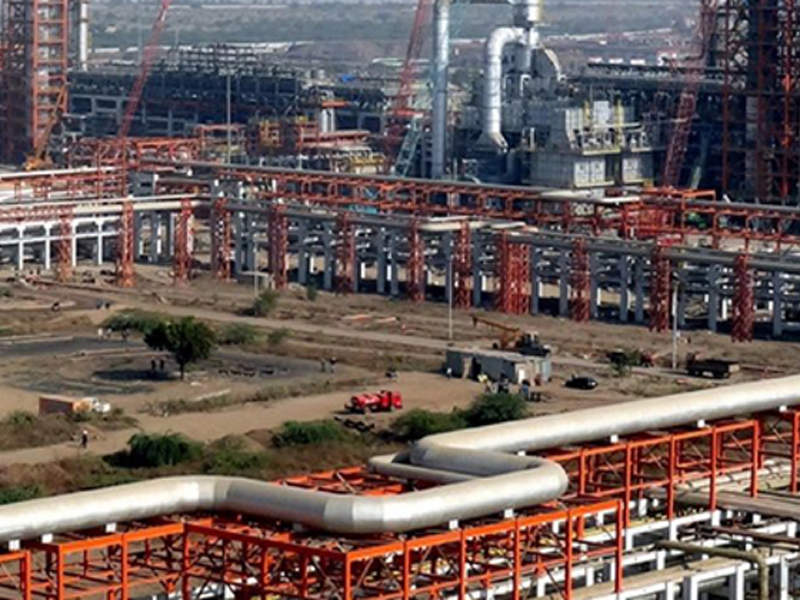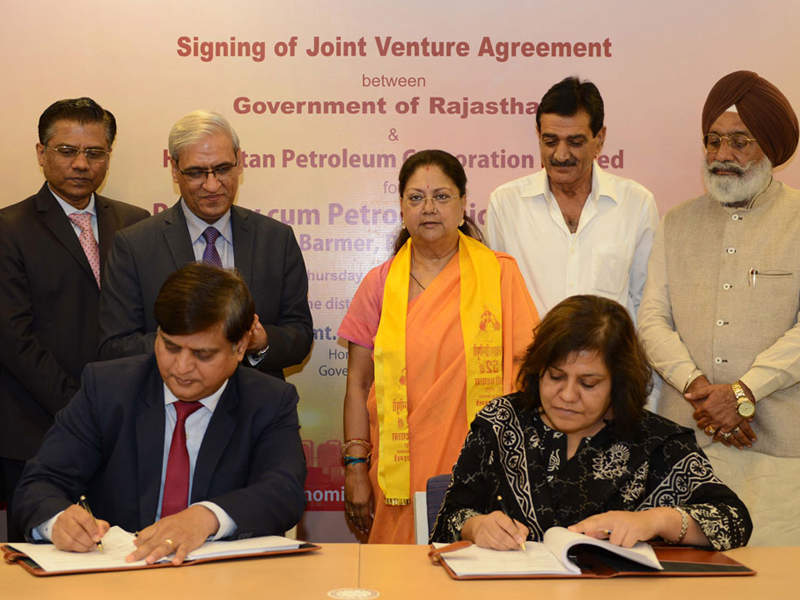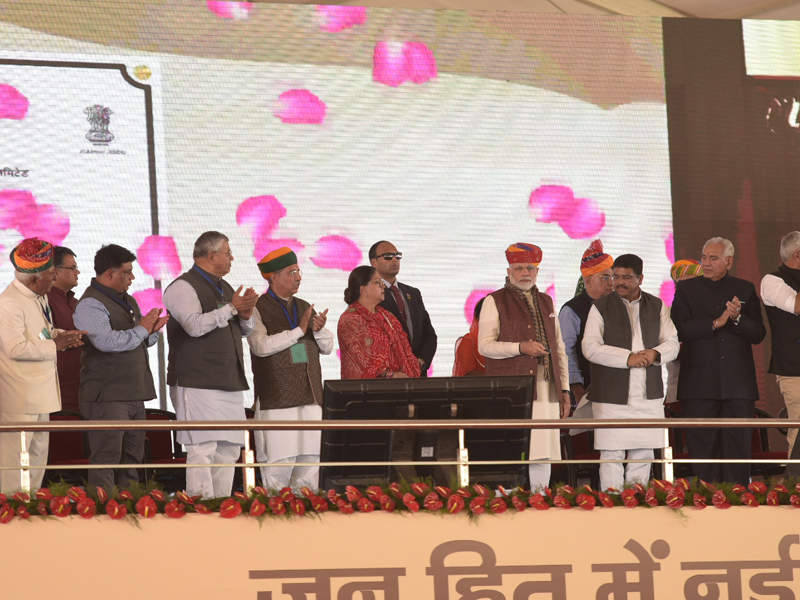Barmer refinery and petrochemical complex is a new facility that is currently being developed for the production of clean fuels in the Barmer district of Rajasthan, India.
The project is the first of its kind in Rajasthan and is being developed by a joint venture (JV) between Hindustan Petroleum Corporation Limited (HPCL, 74%) and the Government of Rajasthan (26%) known as HPCL Rajasthan Refinery Limited (HRRL).
The new refinery and petrochemical complex will have a total processing capacity of nine million metric tonnes per annum (MMtpa) It will be used for the production of BS-VI grade motor spirit and diesel fuel, as well as other products including ethylene and propylene derivatives. The derivatives will be used as feedstock in industries, such as textiles, packaging and petroleum.
The project received environmental clearance in September 2017 and final approval from the Government of India in October 2017.
Construction on the project commenced in January 2018 and is scheduled to be completed by 2022.
The development is estimated to cost $6.8bn and will create approximately 1,500 direct jobs upon completion, as well as up to 40,000 indirect jobs during construction.
It is also expected to contribute to Rajasthan’s economic development and aid in the development of downstream petrochemical companies.
Barmer refinery location
The refinery and petrochemical complex will be built on 4,813 acres of land approximately 5km away from Pachpadra village in Rajasthan’s Barmer district.
It will be located 100km from Jodhpur Airport and benefit from connections to National Highway NH-112.
Barmer refinery and petrochemical complex details
The proposed facility will feature a total of 29 process units, including a 9MMtpa crude distillation unit, a 4.8MMtpa vacuum distillation unit and a 1.8MMtpa naphtha hydrotreating unit.
It will also include a diesel hydrotreatment unit with a capacity of 4.1MMtpa, a vacuum gas oil treatment hydrotreater with a capacity of 3.5MMtpa and a petro fluidised catalytic cracking unit with a capacity of 2.9MMtpa.
Other units will include an isomerisation unit with a capacity of 0.26MMtpa, a dual-feed cracker unit with a capacity of 82,000tpa, an ethylene recovery unit with a capacity of 77,000tpa, two polyethylene units with a capacity of 0.416MMtpa and two polypropylene units with a capacity of 0.49MMtpa. The polypropylene units will feature Lummus’ NOVOLEN process reactors and NHP catalyst.
The Barmer refinery is expected to process 1.5MMtpa of crude indigenously produced in Rajasthan at the Mangala fields, 7.5Mmtpa of Arab and other crude, as well as natural gas during its initial eight years of operations.
It will also process 9Mmtpa of Arab mix crude, as well as natural gas, following its eighth year of operation.
Common units and infrastructure facilities
The refinery and petrochemical complex will include various common units and utility systems, such as a benzene recovery unit, a hydrogen generation unit, an amine regeneration unit, a sour water stripping unit and a sulphur recovery unit.
Additional utilities will include internal fuel oil and fuel gas systems, a compressed air and nitrogen plant, a condensate system, raw water and cooling water system and as a boiled feedwater treatment system.
The facility will feature various technologies in multiple units, including a naphtha hydrotreating unit, a semi regenerative reformer, a C5-C6 isomerisation unit, a Prime-G+ cracked gasoline selective desulphurisation unit, an AlphaButol high purity 1-Butene production unit and a Sultimate tail gas treatment unit.
It will be powered by an on-site captive power plant consisting of four gas turbine generators of 33 megawatts (MW) each and five 26MW steam turbine generators.
The refinery will also include offsite facilities for the storage of crude oil, intermediate products and finished products.
Financing for Barmer refinery and petrochemical complex
A memorandum of understanding (MoU) for the development of the Barmer refinery was originally signed by HPCL and the Government of Rajasthan in March 2013 with an investment of Rs372.3bn ($5.74bn).
HPCL and the Government of Rajasthan also signed a joint venture (JV) agreement in July 2013 to implement the project via the HPCL Rajasthan Refinery Limited (HRRL) JV.
The project was initially approved by the Government of India in September 2013. The state government initially agreed to provide the JV with an interest-free loan of Rs3.73bn ($575.93m) per year for a 15-year period.
However, the new state government opposed the terms of the agreement regarding the government’s allocated stake in the development and reviewed the deal in July 2014.
A new JV agreement was subsequently signed by the government and HPCL in August 2017 to develop the project with an investment of Rs431.29bn ($6.8bn).
The Government of Rajasthan will provide an interest-free loan of Rs11.23bn ($177m) a year for 15 years under the new arrangement.
The state will receive a 12% return on investment from the refinery project.
HPCL entered a debt syndication agreement with a State Bank of India (SBI) led consortium for a loan of Rs287.53bn ($4.05bn) for the project, in January 2019. The agreement marked the financial closure of the refinery and petrochemical project.
Contractors involved
Axens Technologies was awarded a contract to provide advanced technologies for the facility in April 2019. The contract includes the supply of proprietary equipment, catalysts and adsorbents.
McDermott International won a contract to provide basic engineering design of two polypropylene plants. Engineers India Limited (EIL) received a Rs50bn ($689.24m) contract to execute the refinery project.






